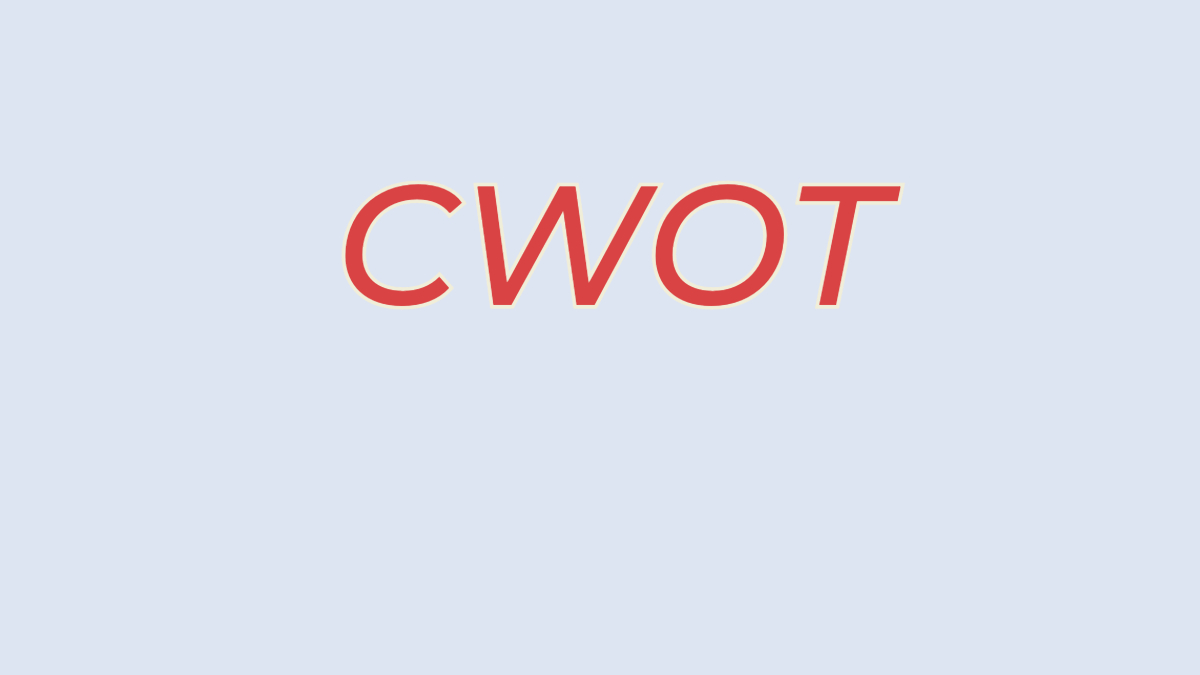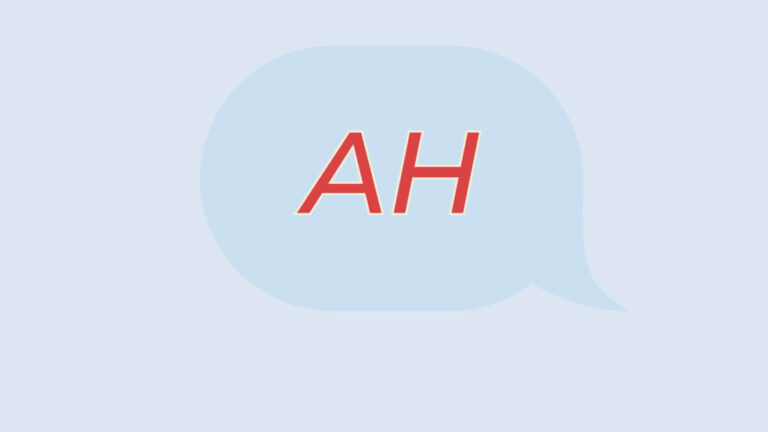What Does CWOT Mean in Texting and How to Use It
In the sea of texting acronyms, one term that you might have come across is “CWOT.” If you’re wondering what CWOT means, you’re not alone. This guide will shed light on this confusing term.
We will first look at what CWOT stands for. We’ll explore its origin and how people use it. Finally, we will talk about when it’s okay to use this acronym and when you should avoid it. Get ready to add another term to your texting lingo.
What Exactly Does CWOT Mean in Texting?
So, What does CWOT stand for? CWOT is an acronym for “Complete Waste Of Time.” It’s a way to say something is not worth your time or effort.
Where Did CWOT Come From?
The term is not brand new. It has been used in online forums and IM (Instant Messaging) for some years. It’s not as old as “LOL” or “BRB,” but it’s been around long enough to be recognized by many people in digital communication.
Common Contexts
Where would you see “CWOT” used? Here are some scenarios:
- When you’re watching a movie that turns out to be bad: “This movie is a CWOT.”
- In a work setting, where a project is not going well: “This project is turning into a CWOT.”
- When discussing a useless gadget or app: “That app was a CWOT.”
What Does It Immediately Tell You?
When someone uses “CWOT,” it tells you right away that they think something is not worth the time or effort. It’s a strong expression of disappointment or frustration.
Decoding Texting Acronyms: Understanding CWOT
Texting has become our go-to way of communicating, especially in modern society. Terms like “CWOT” pop up all the time. Understanding them makes texting easier and more fun. Knowing what CWOT means can help you understand the tone and meaning behind the message you’re reading or writing.
Contextual Examples of Using CWOT
Texting is versatile. We use it for different reasons and in different settings. The term CWOT is mainly used in casual texting. Let’s say your friend suggests watching a movie that you don’t like. You might reply with, “Nah, that movie is a CWOT.”
In formal settings, using “CWOT” might not be the best choice. If your boss asks you about the progress of a project, saying “This project is a CWOT” could get you into trouble. Instead, you might say, “The project is not meeting our expectations.”
CWOT on Social Media
Social media is a big playground for all kinds of language. You might see someone tweet, “Just watched a show on Netflix. It was a complete CWOT!” Here, CWOT sums up the user’s disappointment in just a few letters. It’s quick and everyone gets it.
Context is Key
Like any term, CWOT takes on different shades of meaning depending on the context. If you text your friend, “Don’t bother with that café, it’s a CWOT,” you are advising them against a bad experience. If you comment on a social media post, “This is a CWOT,” you are publicly sharing your negative opinion. Context shapes the impact of the term.
The Slang Evolution of CWOT
Texting language is always changing. CWOT is no exception. It started as a quick way to express disappointment in forums and instant messaging. Over time, it moved to texting and social media. It’s a term that younger generations picked up, making it part of today’s texting trends.
Other Terms You Might Know
There are many terms similar to CWOT. For example, “SMH” stands for “Shaking My Head,” used when something is unbelievable or disappointing. Another one is “FOMO,” which stands for “Fear Of Missing Out.” These acronyms serve similar purposes: they capture a strong emotion in a quick, easy-to-type way.
Does Region Matter?
Interestingly, CWOT and terms like it are mostly universal, especially among English speakers. Whether you’re texting in the U.S. or the U.K., “CWOT” is understood the same way. There are, of course, regional slangs, but CWOT isn’t one of them.
Common Pitfalls and How to Avoid Them
Texting is easy, but sometimes it’s too easy. That’s when we make common mistakes. With CWOT, these errors can cause confusion or even hurt someone’s feelings. It’s important to know what to watch out for.
The “Too Casual” Trap
The first mistake is using CWOT in a setting where it’s not appropriate. Imagine sending a work email and saying, “This project is a CWOT.” That wouldn’t be professional. Save CWOT for casual chats with friends.
Unclear Context
Another mistake is using CWOT without giving enough context. If you say something is a CWOT, make sure the other person knows what you are talking about. Are you referring to a movie, a restaurant, or something else?
Overuse of CWOT
The term loses its impact if you use it for everything. Reserve CWOT for times when you genuinely feel that something’s not worth the time or effort.
How to Avoid Misunderstandings
Mistakes can lead to misunderstandings, and that’s the last thing anyone wants in a conversation. Here’s how to keep the meaning of CWOT clear:
- Provide Context: Make sure the other person knows what you’re referring to.
- Check the Tone: If you’re texting, the tone is hard to catch. Use emojis to clarify.
- Choose the Right Audience: Keep CWOT for casual, informal conversations.
Handy Tips for Using CWOT
Here are some tips to help you use CWOT without stumbling into a texting faux pas:
- Always read your message before sending it.
- Ask yourself if CWOT is the best term to express your feelings.
- Consider the relationship you have with the person you’re texting.
Conclusion
We’ve talked a lot about CWOT, what it means, and how to use it wisely. It’s a term that sums up disappointment or disapproval. But how you use it can make a big difference. Always consider the context and the person you’re talking to.
Frequently Asked Questions (FAQs)
What are common mistakes when using CWOT?
Common mistakes include using CWOT in a formal setting, using it without providing enough context, and overusing the term.
How can I avoid misunderstandings when using CWOT?
To avoid misunderstandings, provide context, check the tone, and choose the right audience for using CWOT.
What should I consider before using CWOT in a text?
You should consider the context, the person you’re talking to, and the tone of the conversation.
Is CWOT suitable for formal conversations?
No, CWOT is generally considered informal and should be avoided in formal conversations or emails.
What are some tips for using CWOT responsibly?
Read your message before sending, consider if CWOT is the best term for what you want to express, and think about your relationship with the person you’re texting.
What does CWOT mean?
CWOT stands for “Complete Waste of Time.” It’s used to express disappointment or disapproval.
Is CWOT used differently in different regions?
There’s no strong evidence to suggest that CWOT is used differently in different regions.
Are there any other acronyms similar to CWOT?
Yes, terms like “SMH” (Shaking My Head) or “FOMO” (Fear Of Missing Out) can be similar in conveying feelings, but they aren’t direct substitutes.
How has the term CWOT evolved over time?
The term CWOT has become more common with the advent of texting and digital communication. However, its basic meaning has stayed relatively constant.
How can I text responsibly?
Be clear and considerate in your messaging. Understand that words have the power to impact someone’s feelings, so choose them wisely.
What is the conclusion about using CWOT in texting?
CWOT is a useful term for expressing disappointment or disapproval in casual settings. However, it’s important to use it carefully to avoid misunderstandings.



